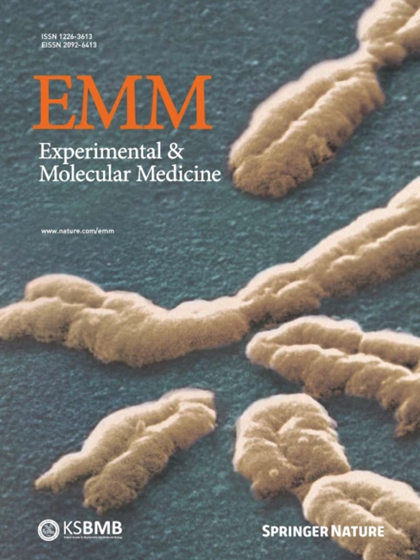The dual role of PGAM5 in inflammation
IF 9.5
2区 医学
Q1 BIOCHEMISTRY & MOLECULAR BIOLOGY
引用次数: 0
Abstract
In recent years, the focus on human inflammation in research has increased, with aging-related inflammation widely recognized as a defining characteristic of aging. Inflammation is strongly correlated with mitochondrial dysfunction. Phosphoglycerate mutase family member 5 (PGAM5) is a novel modulator of mitochondrial homeostasis in response to mechanical stimulation. Here we review the structure and sublocalization of PGAM5, introduce its importance in programmed cell death and summarize its crucial roles in the development and progression of inflammatory diseases such as pneumonia, hepatitis, neuroinflammation and aging. Notably, PGAM5 has dual effects on controlling inflammation: distinct PGAM5-mediated mitochondrial functions exhibit cellular heterogeneity, leading to its dual functions in inflammation control. We therefore highlight the double-edged sword nature of PGAM5 as a potential critical regulator and innovative therapeutic target in inflammation. Finally, the challenges and future directions of the use of PGAM5, which has dual properties, as a target molecule in the clinic are discussed. This review provides crucial insights to guide the development of intelligent therapeutic strategies targeting PGAM5-specific regulation to treat intractable inflammatory conditions, as well as the potential extension of its broader application to other diseases to achieve more precise and effective treatment outcomes. This Review explores the role of the PGAM5 protein in inflammation and aging and investigates how PGAM5 affects mitochondrial function and inflammation. The authors review various experiments showing that PGAM5 can both promote and reduce inflammation by influencing processes such as mitochondrial fission and mitophagy, which are crucial for maintaining cell health. This research highlights that PGAM5 interacts with other proteins to regulate cell death and inflammation. The findings suggest that PGAM5 has a dual role: it can either worsen or alleviate inflammation depending on the context. This dual nature makes it a potential target for treating inflammatory diseases. Future research could focus on developing therapies that modulate PGAM5 activity to treat conditions such as arthritis or neurodegenerative diseases. This summary was initially drafted using artificial intelligence, then revised and fact-checked by the author.

PGAM5在炎症中的双重作用。
近年来,研究对人类炎症的关注越来越多,与衰老相关的炎症被广泛认为是衰老的一个决定性特征。炎症与线粒体功能障碍密切相关。磷酸甘油酸突变酶家族成员5 (PGAM5)是机械刺激下线粒体稳态的一种新型调节剂。本文综述了PGAM5的结构和亚定位,介绍了它在程序性细胞死亡中的重要性,并总结了它在炎症性疾病(如肺炎、肝炎、神经炎症和衰老)的发生和进展中的重要作用。值得注意的是,PGAM5在控制炎症方面具有双重作用:不同的PGAM5介导的线粒体功能表现出细胞异质性,导致其在炎症控制方面具有双重功能。因此,我们强调PGAM5作为炎症的潜在关键调节因子和创新治疗靶点的双刃剑性质。最后,讨论了具有双重性质的PGAM5作为靶分子在临床应用中面临的挑战和未来发展方向。该综述为指导开发针对pgam5特异性调控的智能治疗策略以治疗难治性炎症提供了重要见解,并可能将其更广泛的应用于其他疾病,以获得更精确和有效的治疗结果。
本文章由计算机程序翻译,如有差异,请以英文原文为准。
求助全文
约1分钟内获得全文
求助全文
来源期刊

Experimental and Molecular Medicine
医学-生化与分子生物学
CiteScore
19.50
自引率
0.80%
发文量
166
审稿时长
3 months
期刊介绍:
Experimental & Molecular Medicine (EMM) stands as Korea's pioneering biochemistry journal, established in 1964 and rejuvenated in 1996 as an Open Access, fully peer-reviewed international journal. Dedicated to advancing translational research and showcasing recent breakthroughs in the biomedical realm, EMM invites submissions encompassing genetic, molecular, and cellular studies of human physiology and diseases. Emphasizing the correlation between experimental and translational research and enhanced clinical benefits, the journal actively encourages contributions employing specific molecular tools. Welcoming studies that bridge basic discoveries with clinical relevance, alongside articles demonstrating clear in vivo significance and novelty, Experimental & Molecular Medicine proudly serves as an open-access, online-only repository of cutting-edge medical research.
 求助内容:
求助内容: 应助结果提醒方式:
应助结果提醒方式:


